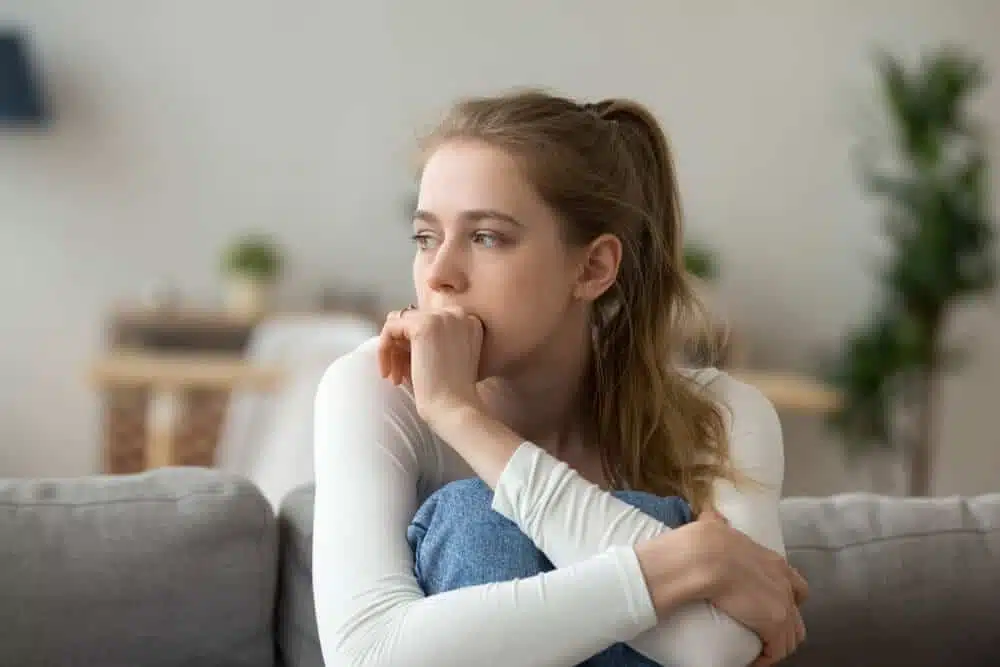
The Other Side of PTSD: PTSD Triggers
Many people, teens included, will experience trauma at some point in their lives. Trauma or being part of a traumatic event or circumstance is not something limited by age or any other demographic. Some studies indicate as many as forty percent of children and teens will experience at least one traumatic event during their lifetime. While many who experience trauma can “bounce back” from the experience within a short time, some do not recover as quickly or at all. In these cases, struggles to cope with a traumatic experience and the memories related to that experience impact their ability to move forward. These individuals, including children and teens, are at a greater risk of developing post-traumatic stress disorder or PTSD.
Post-traumatic stress disorder is most often associated with soldiers returning from war or police officers and emergency services workers who have experienced or witnessed a traumatic event. Although these circumstances can and often do lead to post-traumatic stress disorder, trauma is not limited to specific career fields. Traumatic events can also include physical violence, sexual abuse or violence, an accident, or natural disasters. Children and teens can either experience these events themselves, or they may have witnessed them happening to a loved one or someone else they know.
Understanding Post-Traumatic Stress Disorder
To understand how PTSD triggers may affect your teen, it is important to understand the illness itself. Post-traumatic stress disorder or PTSD is a mental illness that can occur when someone witnesses or experiences a traumatic event. The definition of trauma can be different for each person. Everyone views circumstances in their own way, so what may be traumatic for one person may not be for someone else. In any given year, as many as 8 million adults experience PTSD. Of those, approximately 37% will experience a serious impairment resulting from their post-traumatic stress disorder symptoms.
Trauma is a broad term used to describe many different circumstances. Natural disasters, serious accidents, acts of terrorism, war, combat, assault, or being the victim of violence can all be traumatic events. Also, witnessing a traumatic event that affects a friend or loved one, such as domestic abuse, can be traumatic for a child or teen. Experiencing trauma is not rare. As many as 6 out of every 10 men (60%) and 5 out of every 10 women (50%) experience at least one trauma in their lives.
Research shows that 5% of teenagers between the ages of thirteen and eighteen will develop post-traumatic stress disorder. Teen PTSD rates are higher among females (8%) than among males (2.3%). Also, post-traumatic stress disorder in teens was more common for those over age 15. In most cases, the more severe the trauma, the more likely the teen will be affected by the debilitating symptoms of post-traumatic stress disorder.
What are PTSD Triggers?
Triggers develop before or during a traumatic event. They often include feelings, emotions, or experiences that occurred in the moments, days, or even weeks leading up to the event. For example, someone may smell smoke or hear a loud noise in the moments before a traumatic event. The brain will then associate those smells and sounds with an upcoming threat or danger. The smell or the sound is now a trigger.
How your child or teen reacts to triggers will also be different. Triggers can lead to various emotions or behaviors that manifest upon experiencing the trigger. Triggers can lead to panic attacks, anxiety, aggression, sadness, dreams, vivid memories, elevated startle response, or the need to “numb” their emotions, often leading to substance use or abuse. Seeking treatment for your teen at a teen-focused treatment center like Beachside can help them learn healthy, safer ways to cope with PTSD triggers.
Types of Triggers
PTSD triggers depend on sounds, people, sights, or the environment surrounding your teen leading up to or during a traumatic event. Triggers are associated with the extreme fear response that results from witnessing or experiencing trauma. There are several types of potential triggers.
Sounds
Sounds that mimic those that occurred as part of a traumatic event can be very triggering. Sound-based triggers are highly common among victims of or witnesses to violent crime and war veterans. An example would be sounds that mimic gunshots or explosions.
People
People who were at or near the event or those who caused the event can be triggering. For some, seeing someone who was present when the event occurred is too challenging to handle. For others, having to come face to face with the “cause” of the event can be highly triggering.
Feelings
Emotions such as stress, panic, or fear can remind your teen of how they felt during a traumatic event. When these feelings occur in the future, even unrelated to trauma, it can cause them to re-experience or relive their event. This is also known as a “flashback.”
Places
Visiting a place that was associated with the event can lead to reliving the traumatic event.
Smells
Specific scents such as smoke, perfume, aftershave, exhaust fumes can all trigger memories of an event. Smells are believed to have a stronger connection to memory than the other sensed and, if triggered, may evoke the strongest reaction.
Things or Objects
Objects that were present or remind your teen of a traumatic event can be triggering. These can be something as simple as a piece of clothing, a type of vehicle, or anything else notable that your teen saw or touched in the moments leading up to the event.
Anniversaries
Knowing and remembering significant dates leading up to an event can produce stress and anxiety for those who were part of the event. Adding to the challenge may be news coverage of the event. News networks often run stories on the anniversary of significant events, and seeing these broadcasts or reading tributes of stories about the event on social media can be particularly triggering.
Coping with PTSD Triggers
Avoiding contact or exposure to PTSD triggers may seem like the most obvious way to avoid reliving the trauma. Unfortunately, it is nearly impossible to still participate in day-to-day activities and avoid everything that could be triggering. Also, avoidance is unlikely to be helpful for your teen when trying to cope with long-term symptoms of post-traumatic stress disorder. When it comes to treatment for PTSD, exposure is the most common and most effective treatment and coping strategy. Exposure can help remove the trigger from the memory of the trauma, so it is no longer associated with the trauma.
Treatment for post-traumatic stress disorder comes in many forms, including psychotherapy, support groups, and medications.
Cognitive-Behavioral Therapy (CBT)
Cognitive-behavioral therapy is one of the most common forms of “talk therapy” and has proven to consistently be the most effective treatment of post-traumatic stress disorder. For teens with PTSD, CBT is used in a trauma-focused manner meaning the events specific to the trauma are the primary focus of treatment. Additionally, the process focuses on helping to identify, understand, and finally, change maladaptive thinking and behavior patterns. There are various types of cognitive-behavioral therapy, and each has differing amounts of exposure and intervention. This is important because what works well for one person may not be effective for someone else.
CBT for post-traumatic stress disorder includes other types of behavioral therapies as well. Exposure therapy, cognitive restructuring therapy, and prolonged exposure therapy. Exposure therapy helps people to face and control their fears by exposing them to the memories of the trauma they experienced in the context of a safe environment. Exposure can take the form of mental imagery, writing, or even visiting places or people that remind the person of their trauma. Cognitive restructuring is a type of intervention that helps people process and make sense of their bad memories. Cognitive restructuring helps people examine the event from an objective perspective and develop a realistic view of the trauma. Finally, prolonged exposure therapy helps your teen gradually approach the memories related to their trauma. Prolonged exposure focuses on exposures to help people stop avoiding trauma reminders.
Medications
Unfortunately, there is no medication specifically approved for treating or “curing” post-traumatic stress disorder. However, in some cases, antidepressants and anti-anxiety medications can provide symptom relief. Medications are not commonly used on their own. Generally, medications are used in conjunction with regular therapy sessions.
Residential Treatment at Beachside
Post-traumatic stress disorder can be overwhelming and difficult for your teen and your family to manage without help. When left untreated, the common symptoms and triggers of trauma can potentially have a detrimental impact on your teen’s developmental and social functioning. PTSD can also have a significant effect on their ability to focus on school and participate in social and family events outside of the safety of their home.
The outpatient treatment setting may not provide enough support and guidance to help manage symptoms and achieve recovery for children and teens struggling with post-traumatic stress disorder. In a residential environment like Beachside, a highly trained team of medical professionals will work with you and your family to develop a treatment plan to help your teen learn to cope with their symptoms.
At Beachside, our caring and compassionate staff are here to provide a strong support system that can help both you and your child on the path to recovery. Remember, above all, post-traumatic stress disorder is treatable, and with the proper support and guidance, your child can move past their trauma and resume their full, active, and healthy life. If you believe your teen may have experienced trauma or are concerned about symptoms related to post-traumatic stress disorder, reach out to the admissions team at Beachside Teen Treatment Center in Malibu today.
https://www.psycom.net/ptsd-in-children-and-adolescents
https://www.ptsd.va.gov/understand/what/teens_ptsd.asp
https://econtent.hogrefe.com/doi/full/10.1027/0044-3409/a000021
https://www.ptsd.va.gov/professional/treat/essentials/epidemiology.asp
https://www.nimh.nih.gov/health/statistics/post-traumatic-stress-disorder-ptsd




